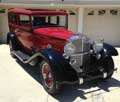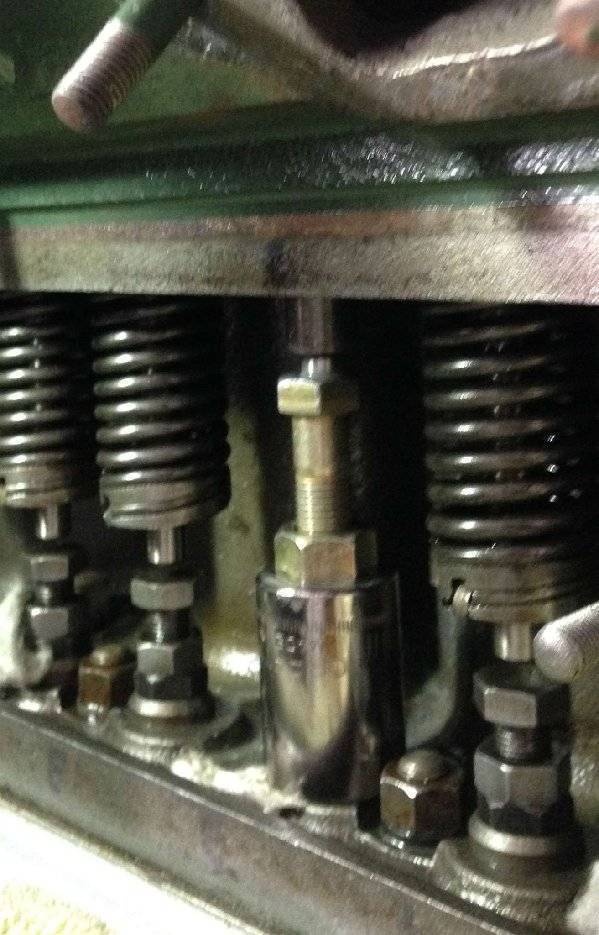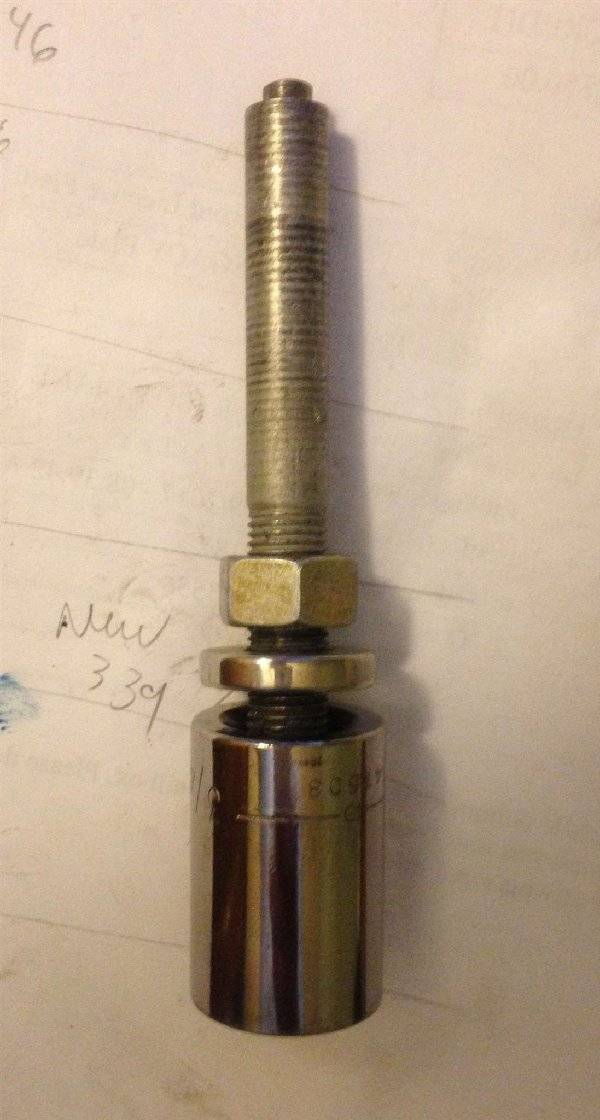|
Re: Valve train noise 1932 901
|
||||
|---|---|---|---|---|
|
Forum Ambassador

|
Whoa! When we began this, the engine was running and now we find a valve is stuck in the DOWN position. What am I missing? Unless the cam lobe if worn flat or the cam follower roller has disengaged the cam lobe, how can a valve be stuck down and yet the engine was able to turn over?
I assume the stuck valve was an intake?
Posted on: 2018/2/21 15:10
|
|||
|
||||
|
Re: Valve train noise 1932 901
|
||||
|---|---|---|---|---|
|
Home away from home

|
It was an exhaust valve. The noise was intermittent with it happening about 75% of the time (4 or 5 seconds with noise and 1 or 2 seconds without). When there was noise the engine had a major miss and when it was quite it ran smooth.
I'm' guessing that when it was noiseless the valve spring closed the valve and when it didn't the partially closed valve was being hit by the tappet which caused the noise. By chance, when I shut it down was one of the times the valve close. I must also add that after it was shut down and before I removed the head and distributor, I manually turned the engine over to get the distributor rotor pointed forward (a habit that I've developed over the years whenever removing a distributor.
Posted on: 2018/2/22 11:34
|
|||
|
||||
|
Re: Valve train noise 1932 901
|
||||
|---|---|---|---|---|
|
Home away from home

|
I'm getting ready to put it all together again and can't seem to find a mark on the harmonic balancer nor a pointer/scale to compare it with. Am I missing something? Also, I found a Service Bulletin (Vol. 12 No. 6 ,pg 3) that addresses sticking valves in the 1600 series.
Don't think it applies to my case however, but it was interesting.
Posted on: 2018/3/5 18:53
|
|||
|
||||
|
Re: Valve train noise 1932 901
|
||||
|---|---|---|---|---|
|
Forum Ambassador

|
Are you asking about ignition timing marks and pointer? If so in 1934 they were moved to the vibration damper but prior to that they were on the flywheel and the pointer is seen when the starter motor is removed.
Posted on: 2018/3/5 19:01
|
|||
|
||||
|
Re: Valve train noise 1932 901
|
||||
|---|---|---|---|---|
|
Home away from home

|
Dave,
Thanks for getting back to me. Yes, I was referring to the ignition timing marks and pointer. So what is the correct procedure for setting the timing on a 901? Also, the car has a 1000 series downdraft carburetor system/manifold system. I'm somewhat concerned about applying stresses to the intake & exhaust manifolds and cracking them as they are bolted together. What is the safest way to do this?
Posted on: 2018/3/6 10:08
|
|||
|
||||
|
Re: Valve train noise 1932 901
|
||||
|---|---|---|---|---|
|
Home away from home

|
To All THANKS for your help.
I finished off this project this past weekend and the engine is back up and running. All I need to do now is to 1) check oil flow in the valve galley 2) head engine up and torque head and intke exhaust nuts and 3 adjust valves. I want to mention that I experienced some issues with the "Hot Spot" on the manifolds. I failed to get a good seal between the two manifolds as both surfaces being rather rough (especially the exhaust). I then tried two gaskets with Permatex Copper Stray without success. I re-installed both manifolds w/o a gasket and saw that the distance between the two was about 1/16" at the wide points. I thought about investigating locating a place where I could get all three surfaces redone. I decided against that and left it for the "Final Solution" for several reasons 1) porcelain 2) their age with brittleness and 3) the complex geometry of the manifolds. The approach that I took was to use a long single cut fine bastard file to knock down the high spots on the exhaust manifold being extremely careful not to round the outer edges and to keep things as flat as possible. I knew that this would increase the distance between the two manifolds, but that they would be flatter. So I opted to make mine own gaskets using Remflex's GS16511 high temp gasket material. This is a material 1/8" thick and can go to 3000 deg. F with a 50% crush capability that does not require a lot of torque on the nuts/bolts. It worked like a charm and I would use it again.
Posted on: 2018/3/20 3:46
|
|||
|
||||
|
Re: Valve train noise 1932 901
|
||||
|---|---|---|---|---|
|
Forum Ambassador

|
Thanks for the update and glad to read about the progress. You're right, that complex manifold geometry can present a problem, when you resurface the manifolds for the fit to the engine block surface, you alter the fit at the hotbox. I'd sure like to read somewhere how Packard dealt with that situation.
Posted on: 2018/3/20 6:35
|
|||
|
||||
|
Re: Valve train noise 1932 901
|
||||
|---|---|---|---|---|
|
Home away from home

|
There is no doubt that it would be interesting to know how Packard did it back in the day. One might guess that they had some sort of jig to get all three surfaces to come together correctly. I wasn't looking forward to trying to get them resurfaced. I had figured that with the three hot spot holes lined up and knowing the gap between the two manifolds that it should be possible to calculate how much would be needed to be removed from the other two surfaces. Not a task fraught with numerous areas where the manifolds would end up as bookends.
In any case I'm extremely happy that the Remflex did the trick. Now I just need to see if it accomplishes the test of time.
Posted on: 2018/3/23 9:50
|
|||
|
||||

 (198.82 KB)
(198.82 KB)








